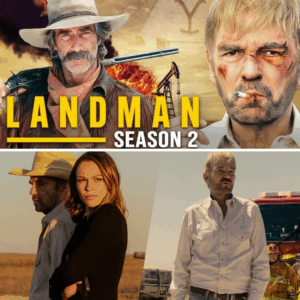In July 2025, Central Texas was ravaged by catastrophic flash floods, claiming over 100 lives, including 28 children, and leaving communities in disarray. Amid this tragedy, a viral claim spread across social media, alleging that billionaire Elon Musk donated $300 million to Texas flood relief efforts, with thousands of dogs rescued, search and rescue dogs deployed, and mobile shelters built. The story, accompanied by images of Musk and flood-damaged areas, captured global attention. However, investigations by fact-checking outlets like Snopes have debunked this claim, revealing no credible evidence of such a donation or specific animal rescue efforts tied to Musk. Despite the falsehood, Musk’s history of disaster relief contributions and his company Starlink’s role in providing connectivity during the crisis offer a nuanced perspective on his involvement. This article explores the viral rumor, its origins, Musk’s actual contributions, and the broader context of the Texas flood response.
The Viral Claim: A $300 Million Donation and Animal Rescues
The rumor emerged shortly after the devastating July 3–4, 2025, floods in Central Texas, particularly in Kerr County, where the Guadalupe River overflowed, devastating summer camps like Camp Mystic, where 27 campers and counselors perished. Social media platforms, especially Facebook, buzzed with posts claiming that Elon Musk, CEO of Tesla and SpaceX, donated $300 million to flood relief efforts. These posts, often paired with AI-generated images of Musk amidst flood debris, also alleged that his funds facilitated the rescue of “thousands of dogs,” the deployment of search and rescue dogs, and the construction of mobile shelters for displaced residents and animals.
The narrative was compelling: Musk, with a net worth of $424.7 billion as of May 2025 according to Forbes, was portrayed as a savior stepping in where government aid fell short. The posts gained thousands of shares, tapping into public admiration for Musk’s wealth and his history of high-profile philanthropy, such as a $2.4 million grant from the Musk Foundation to Hurricane Helene victims in October 2024. Some versions of the story claimed Musk personally oversaw the rescue of stranded pets, with search and rescue dogs scouring flooded areas and mobile shelters providing refuge for both people and animals.
However, Snopes and PolitiFact quickly debunked the claim, finding no evidence of a $300 million donation or specific dog rescue operations linked to Musk. The posts mirrored other false celebrity donation stories, such as claims about Eminem, Tom Brady, and Patrick Mahomes, many featuring AI-generated visuals to enhance credibility. The lack of announcements from Musk, Tesla, SpaceX, or the Musk Foundation, combined with the absence of corroborating reports from relief organizations, confirmed the story as a fabrication, likely designed to drive engagement or mislead viewers to ad-heavy websites.

Musk’s Actual Contributions: Starlink and Past Philanthropy
While the $300 million donation and dog rescue claims are false, Musk’s company, SpaceX, through its Starlink satellite internet service, played a significant role in the Texas flood response. On July 5, 2025, Starlink announced it would provide one month of free connectivity to flood-affected areas, supplying Starlink Mini kits for search and rescue efforts to ensure communication in “dead zones.” Additionally, SpaceX partnered with T-Mobile to enable basic texting connectivity via satellite for smartphone users in the region, aiding emergency communications. These efforts were critical in a disaster that disrupted power, water, and cell service, as reported by The Register.
Musk’s history of disaster relief adds context to why such a rumor gained traction. In October 2024, the Musk Foundation donated $2.4 million to SBP, a New Orleans-based nonprofit, to support Hurricane Helene recovery across Florida, Georgia, and the Carolinas. The foundation also contributed $5 million to COVID-19 vaccine research, $50 million to St. Jude Children’s Research Hospital, and $480,000 for water initiatives in Flint, Michigan. In 2017, Tesla provided Powerpacks to restore electricity to hospitals in Puerto Rico after Hurricane Maria, and in 2022, Starlink supported internet restoration in Tonga following a volcanic eruption. These actions have built Musk’s reputation as a philanthropist, making claims of a massive donation plausible to the public.
However, Musk’s philanthropy has faced scrutiny. The New York Times reported in December 2024 that the Musk Foundation failed to meet the IRS requirement of donating at least 5% of its assets for three consecutive years, despite holding $9.4 billion in assets by 2021. Critics, including Inside Philanthropy, have labeled Musk’s donations “self-serving,” noting that many support causes tied to his companies, such as space exploration and AI safety. A notable example is Musk’s 2021 pledge of $6 billion to address world hunger, which he donated to his own foundation rather than directly to the World Food Programme, despite their detailed plan to feed 42 million people.
The Texas Floods: A Devastating Backdrop
The July 2025 Texas floods were among the deadliest in recent U.S. history, with a death toll exceeding 100, including 28 children, many from Camp Mystic. The floods, triggered by record-setting rainfall, overwhelmed the Guadalupe River, destroying homes, summer camps, and infrastructure. Search and rescue teams, using heavy equipment and dogs, navigated swollen rivers and debris to locate missing individuals, with Kerr County officials reporting 10 campers and one counselor still unaccounted for by July 7. The disaster exposed vulnerabilities in forecasting and preparedness, exacerbated by funding and staff cuts to the National Weather Service, which some attributed to Musk’s influence through the Department of Government Efficiency (DOGE).
The absence of robust federal response fueled speculation about private interventions, like the rumored Musk donation. Social media amplified these narratives, with posts blending real images of flood damage with AI-generated visuals of Musk or celebrities aiding victims. The NFL, Dallas Cowboys, and Houston Texans collectively pledged $1.5 million to affected communities, providing a verified example of relief efforts, but no evidence supported claims of Musk’s $300 million contribution or specific animal rescue initiatives.
Musk’s Controversial Role in Disaster Response
Musk’s involvement in disaster relief is a double-edged sword. While Starlink’s connectivity was a lifeline during the Texas floods, his actions have sometimes hindered relief efforts. In October 2024, Musk spread misinformation on X about FEMA, falsely claiming the agency was blocking aid and prioritizing undocumented immigrants over disaster victims. These claims, amplified to his 200 million followers, were debunked by FEMA and Republican lawmakers, who called them “distractions” that harmed first responders and survivors. A similar incident occurred during the Texas floods, with Musk’s DOGE-related cuts to NOAA funding blamed for delayed weather alerts, potentially contributing to the tragedy.
Musk’s history of high-profile but unfulfilled promises also fuels skepticism. During the 2018 Thai cave rescue, he offered a SpaceX-built mini-submarine, which was deemed impractical by rescuers and never used, leading to a defamation lawsuit after Musk insulted a diver involved. Similarly, Starlink’s “free” internet for Hurricane Helene victims required a $400 kit purchase and a $120 monthly subscription after 30 days, drawing criticism as a “scam.” These incidents highlight Musk’s tendency to generate hype that doesn’t always translate to effective aid, making the $300 million rumor a plausible but unverified extension of his public persona.
The Animal Rescue Angle: Fact or Fiction?
The claim that Musk’s donation funded the rescue of thousands of dogs and the deployment of search and rescue dogs lacks substantiation. While search and rescue dogs were used in the Texas floods, as reported by Daily Mail, no evidence links these efforts to Musk or a specific donation. The idea of mobile shelters for displaced residents and animals also appears to be a fabrication, with no mention in credible reports. Animal welfare organizations, such as the ASPCA, often deploy during disasters, but no records tie their 2025 Texas operations to Musk’s funding. The rumor likely capitalized on public sympathy for animals and Musk’s high-profile image to gain traction.
The Bigger Picture: Misinformation and Musk’s Influence
The $300 million rumor reflects a broader trend of disaster-related misinformation, often amplified by AI-generated content. Similar false claims about celebrities like Eminem and Patrick Mahomes donating millions to Texas flood relief spread simultaneously, exploiting emotional narratives to drive engagement. Musk’s platform, X, has been a breeding ground for such rumors, with his own posts sometimes contributing to confusion, as seen in his Hurricane Helene misinformation. This dynamic underscores the challenges of combating falsehoods in crises, where emotional stories can outpace verified information.
Musk’s influence, as the world’s richest person and a key figure in the Trump administration’s DOGE, amplifies the impact of such rumors. His brief tenure in DOGE, ending May 28, 2025, drew criticism for cuts to federal agencies like NOAA, which may have hindered flood preparedness. Yet, his Starlink service’s role in restoring connectivity highlights his capacity for meaningful contributions when focused on practical solutions.
Conclusion
The claim that Elon Musk donated $300 million to Texas flood relief, rescuing thousands of dogs and building mobile shelters, is a compelling but false narrative, debunked by fact-checkers like Snopes. While Musk’s Starlink provided critical connectivity during the July 2025 floods, and his foundation has a history of disaster relief, no evidence supports the specific claims of this rumor. The story, fueled by AI-generated images and public fascination with Musk, reflects the power of misinformation to shape perceptions during crises. As Texas recovers from a tragedy that claimed over 100 lives, Musk’s real contributions—through Starlink and past philanthropy—coexist with his controversial actions, painting a complex picture of a billionaire whose influence is both transformative and divisive.


